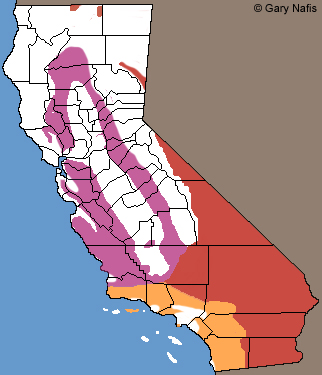|
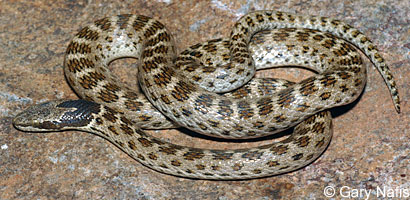 |
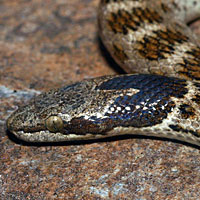 |
| Adult, Kern Plateau, Kern County © Gary Nafis Specimen courtesy of Richard Hoyer |
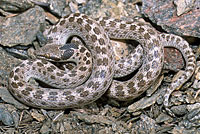 |
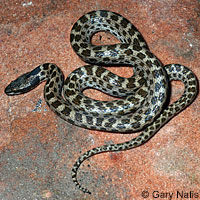 |
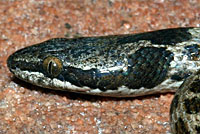 |
| Adult, Kern County |
Adult, San Diego County |
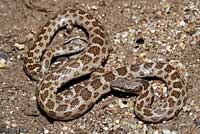 |
 |
 |
| Adult, San Diego County |
Adult, Imperial County |
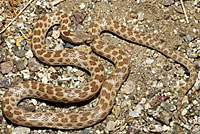 |
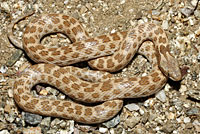 |
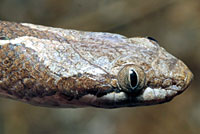 |
| |
Adult, San Diego County |
|
 |
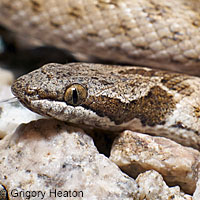 |
| Adult, Riverside County © Grigory Heaton |
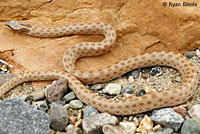 |
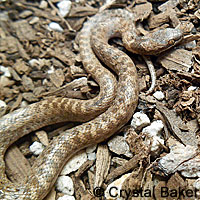 |
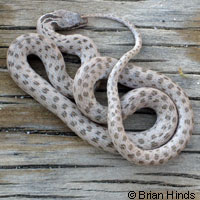 |
| Adult, Inyo County © Ryan Sikola |
Adult from near Susanville, Lassen County © Crystal Baker |
Adult, Riverside County. © Brian Hinds |
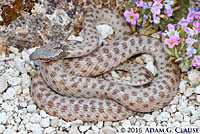 |
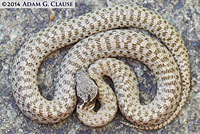 |
 |
Adult female, Mono County
© Adam G. Clause |
Adult with a speckled dorsal pattern, Inyo County © Adam G. Clause |
Adult, Inyo County © Jackson Shedd |
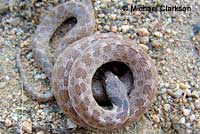 |
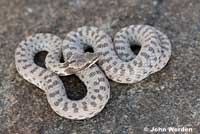 |
|
| Adult in coiled defensive pose, San Bernardino County © Michael Clarkson |
Adult, Riverside County © John Worden
|
|
| |
|
|
| Juveniles |
| |
 |
|
| |
Juvenile, San Bernardino County |
|
| |
|
|
| The same species from outside California |
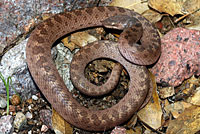 |
 |
|
Adult, Santa Cruz County, Arizona
|
|
| |
|
| Habitat |
 |
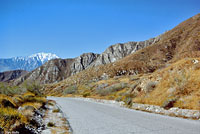 |
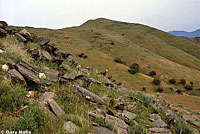 |
| Habitat, San Bernardino County |
Habitat, Riverside County |
Habitat, Kern County |
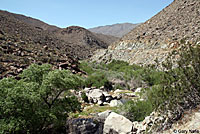 |
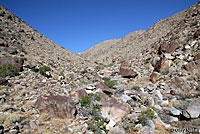 |
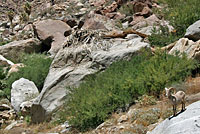 |
| Habitat, San Diego County |
Habitat, San Diego County |
Habitat, San Diego County |
| |
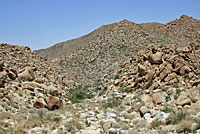 |
|
| |
Habitat, Imperial County
|
|
| |
|
|
| Short Video |
| |
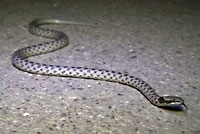 |
|
| |
A Northern Desert Nightsnake crawls across an old cement highway into the desert. |
|
|
|
|
| Description |
Not Dangerous - This snake may produce a mild venom that does not typically cause death or serious illness or injury in most humans, but its bite should be avoided.
Commonly described as "harmless" or "not poisonous" to indicate that its bite is not dangerous, but "not venomous" is more accurate since the venom is not dangerous. (A poisonous snake can hurt you if you eat it. A venomous snake can hurt you if it bites you.)
Rear teeth on the upper jaw are enlarged and grooved to aid in injecting a mild saliva/venom mixture into prey.
|
| Size |
Adults can be 12 - 26 inches long (30-66 cm.) Most seen are 8 - 12 inches long, rarely over 16 inches (40 cm).
Bartlett & Bartlett (2009) shows the size of Hypsiglena hatchlings to be about 7 inches in length (18 cm) but some have been estimated to be as small as 5 inches long (12.7 cm).
|
| Appearance |
| A small slender snake with a narrow flat head, smooth scales in 21 rows, and vertical pupils. |
| Color and Pattern |
Color varies, often matching the substrate, from light gray, light brown, beige, to tan or cream, with dark brown or gray blotches on the back and sides.
Usually a pair of large dark markings on the neck and a dark bar through or behind the eyes.
Whitish or yellowish and unmarked underneath.
|
 |
The vertical pupils on a night snake can help you tell them apart from
gophersnakes and other similar species which have circular pupils.
|
Identifying Nightsnakes in California
|
| Life History and Behavior |
Activity |
Nocturnal, and also active at dusk and dawn.
Can be found under rocks, boards, dead Joshua tree branches, and other surface objects.
Often seen crossing desert roads on warm nights. |
| Diet and Feeding |
| Eats a wide range of terrestrial vertebrates, mostly lizards and their eggs, sometimes small snakes, frogs, and salamanders. |
| Venom |
| Nightsnakes, genus Hypsiglena, have mildly venomous saliva that is introduced into prey by the repeated chewing action of two enlarged teeth found at the rear of the mouth. The venom is not injected by fangs, it is introduced into the prey through small puncture wounds made by the enlarged teeth. The venom helps to incapacitate the small prey, but it is not considered harmful to humans. The small size of the snake's head, the location of the fangs, and the chewing action necessary to administer the venom, make it difficult for a nightsnake to envenomate anything but small animals. (Werler & Dixon, 2000) |
| Reproduction |
Oviparous. After mating, females lay a clutch of 2-9 eggs from April to September. (Stebbins, 2003)
Eggs hatch in 50-65 days. Hatchlings are about 7 inches in length. (Bartlett & Tennant, 2000)
|
| Habitat |
Found in a variety of habitats, often arid areas, from chaparral, Sagebrush flats, deserts, suburban lots and gardens, mountain meadows, grassland.
Most commonly found in areas with abundant surface cover.
|
| Geographical Range |
This subspecies, Hypsiglena chlorophaea deserticola - Northern Desert Nightsnake, is found throughout southern California, north to San Luis Obispo County, east and north along the western Sierra Nevada mountains, and into the Great Basin desert in the far northeast part of California, including Lava Beds National Monument. There is also a record for Siskiyou county north of Yreka near the Oregon Border. Outside of California, it ranges south into Baja California, east throughout the southwest, and north into Washington.
Outside of Califorina, the species, Hypsiglena chlorophaea - Desert Nightsnake, occurs from British Columbia south through central Washington, eastern Oregon, southwest Idaho, Nevada, Utah, extreme western Colorado and New Mexico, into Arizona, Baja Califonria, And Sonora, Mexico.
|
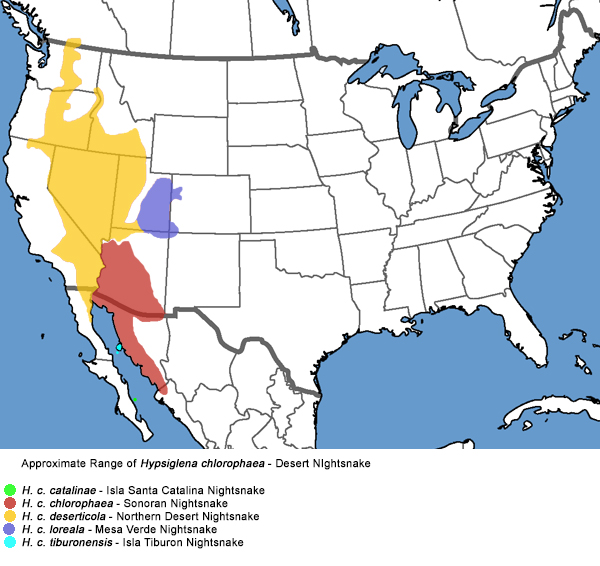 |
| Elevational Range |
Sea level to 8,700 ft. (2,650 meters).
|
| Notes on Taxonomy |
Mulcahy, 2008, conducted a comprehensive genetics study of Hypsiglena, recognizing 6 species, three in the USA, and an undescribed species, all from the one previous species of Hypsiglena torquata. He also maintained several subspecies designations. Within California: H. chlorophaea, and H. ochrorhyncha "…were each recovered as groups of multiple subspecies. The subspecies within these wide-ranging species were maintained pending further evaluation. These subspecies may represent incipient species that may not yet have achieved reciprocal monophyly, but possess unique morphologies, and are geographically discrete." 1
Grismer et al. (1994 Bulletin of the Southern California Academy of Science 93(2): 45-80) synonymized the Hypsiglena torquata subspecies deserticola and klauberi because they intergraded widely.
Alternate and Previous Names (Synonyms)
Hypsiglena chlorophaea - Desert Night Snake (Stebbins & McGinnis 2012)
H. torquata - NIght Snake (Stebbins 1985, 2003)
H. torquata deserticola - Desert NIght Snake (Stebbins 1966)
H. torquata deserticola - Desert Spotted Night Snake; Great Basin Spotted Night Snake (Wright & Wright 1957)
H. torquata deserticola (Stebbins 1954)
Hypsiglena ochrorhynchus - Spotted Night Snake (Rock Snake; Xantus's Snake) (Grinnell and Camp 1917)
|
| Conservation Issues (Conservation Status) |
| None |
|
| Taxonomy |
| Family |
Colubridae |
Colubrids |
Oppel, 1811 |
| Genus |
Hypsiglena |
North American Nightsnakes |
Cope, 1860 |
| Species |
chlorophaea |
Desert Nightsnake |
Cope, 1860 |
Subspecies
|
deserticola |
Northern Desert Nightsnake |
(Tanner, 1944) |
|
Original Description |
Hypsiglena chlorophaea Cope, 1860
deserticola (Tanner, 1944)
|
|
Meaning of the Scientific Name |
Hypsiglena - Greek - hypsi - on high and glenes - eyeball - probably refers to the vertical pupil
deserticola - Latin - inhabitant of a dry place - refers to its habitat
from Scientific and Common Names of the Reptiles and Amphibians of North America - Explained © Ellin Beltz
chlorophaea - dark greenish yellow: chlor - Greek (chloros) - green, greenish-yellowand phae - Greek (phaios) - dusky, dark, gray
from Jaeger, Edmund C. A Source-book of Biological Names and Terms Third Edition. Charles C. Thomas Publisher, 1962.
|
|
Related or Similar California Snakes |
H. o. nuchalata - California Nightsnake
H. o. klauberi - San Diego Nightsnake
T. hobartsmithi - Smith's Black-headed Snake
|
|
More Information and References |
California Department of Fish and Wildlife
1 Daniel G. Mulcahy. Phylogeography and species boundaries of the western North American Night snake (Hypsiglena torquata): Revisiting the subspecies concept. ScienceDirect - Molecular Phylogenetics and Evolution 46 (2008) 1095-1115.
Hansen, Robert W. and Shedd, Jackson D. California Amphibians and Reptiles. (Princeton Field Guides.) Princeton University Press, 2025.
Stebbins, Robert C., and McGinnis, Samuel M. Field Guide to Amphibians and Reptiles of California: Revised Edition (California Natural History Guides) University of California Press, 2012.
Stebbins, Robert C. California Amphibians and Reptiles. The University of California Press, 1972.
Flaxington, William C. Amphibians and Reptiles of California: Field Observations, Distribution, and Natural History. Fieldnotes Press, Anaheim, California, 2021.
Samuel M. McGinnis and Robert C. Stebbins. Peterson Field Guide to Western Reptiles & Amphibians. 4th Edition. Houghton Mifflin Harcourt Publishing Company, 2018.
Stebbins, Robert C. A Field Guide to Western Reptiles and Amphibians. 3rd Edition. Houghton Mifflin Company, 2003.
Behler, John L., and F. Wayne King. The Audubon Society Field Guide to North American Reptiles and Amphibians. Alfred A. Knopf, 1992.
Powell, Robert., Joseph T. Collins, and Errol D. Hooper Jr. A Key to Amphibians and Reptiles of the Continental United States and Canada. The University Press of Kansas, 1998.
Bartlett, R. D. & Patricia P. Bartlett. Guide and Reference to the Snakes of Western North America (North of Mexico) and Hawaii. University Press of Florida, 2009.
Bartlett, R. D. & Alan Tennant. Snakes of North America - Western Region. Gulf Publishing Co., 2000.
Brown, Philip R. A Field Guide to Snakes of California. Gulf Publishing Co., 1997.
Ernst, Carl H., Evelyn M. Ernst, & Robert M. Corker. Snakes of the United States and Canada. Smithsonian Institution Press, 2003.
Taylor, Emily. California Snakes and How to Find Them. Heyday, Berkeley, California. 2024.
Wright, Albert Hazen & Anna Allen Wright. Handbook of Snakes of the United States and Canada. Cornell University Press, 1957.
John E. Werler and James R. Dixon. Texas Snakes: Identification, Distribution, and Natural History. University of Texas Press, Austin. 2000.
Joseph Grinnell and Charles Lewis Camp. A Distributional List of the Amphibians and Reptiles of California. University of California Publications in Zoology Vol. 17, No. 10, pp. 127-208. July 11, 1917.
|
|
|
The following conservation status listings for this animal are taken from the April 2024 State of California Special Animals List and the April 2024 Federally Listed Endangered and Threatened Animals of California list (unless indicated otherwise below.) Both lists are produced by multiple agencies every year, and sometimes more than once per year, so the conservation status listing information found below might not be from the most recent lists. To make sure you are seeing the most recent listings, go to this California Department of Fish and Wildlife web page where you can search for and download both lists:
https://www.wildlife.ca.gov/Data/CNDDB/Plants-and-Animals.
A detailed explanation of the meaning of the status listing symbols can be found at the beginning of the two lists. For quick reference, I have included them on my Special Status Information page.
If no status is listed here, the animal is not included on either list. This most likely indicates that there are no serious conservation concerns for the animal. To find out more about an animal's status you can also go to the NatureServe and IUCN websites to check their rankings.
Check the current California Department of Fish and Wildlife sport fishing regulations to find out if this animal can be legally pursued and handled or collected with possession of a current fishing license. You can also look at the summary of the sport fishing regulations as they apply only to reptiles and amphibians that has been made for this website.
This snake is not included on the Special Animals List, which indicates that there are no significant conservation concerns for it in California.
|
| Organization |
Status Listing |
Notes |
| NatureServe Global Ranking |
|
|
| NatureServe State Ranking |
|
|
| U.S. Endangered Species Act (ESA) |
None |
|
| California Endangered Species Act (CESA) |
None |
|
| California Department of Fish and Wildlife |
None |
|
| Bureau of Land Management |
None |
|
| USDA Forest Service |
None |
|
| IUCN |
|
|
|
|
